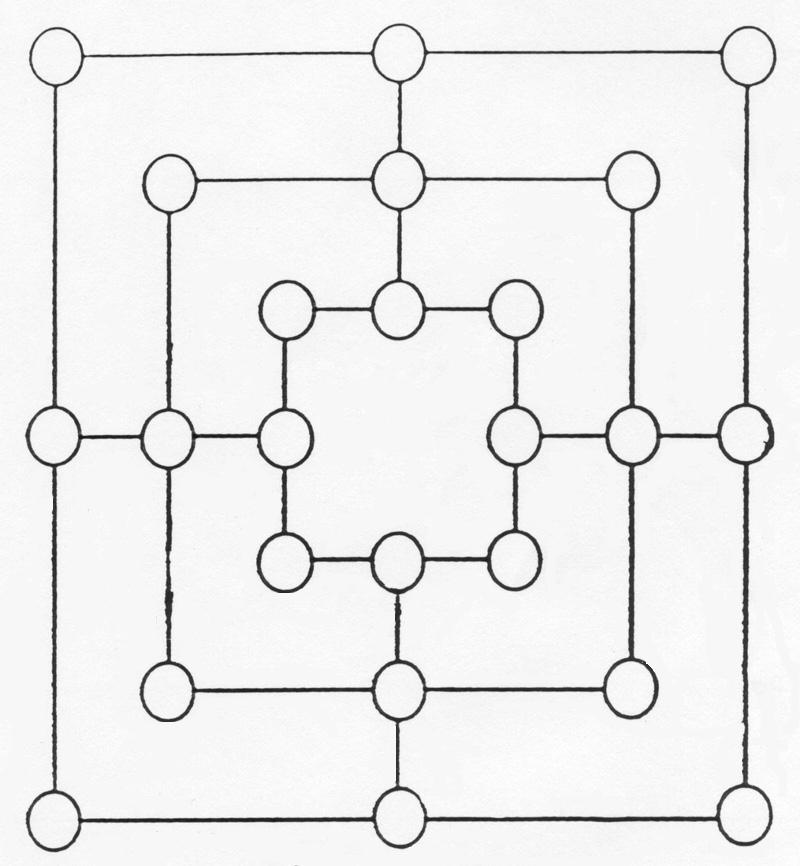The game nine men's morris is known to have been
popular in medieval England and France and probably shares a common origin with ancient versions
of tic-tac-toe. The diagram given below illustrates the playing board most
commonly used. The term morris evolves from the Latin merellus,
meaning "token, coin, or counter". Hence the name "nine men's morris" refers to the
fact that each opponent begins play with nine counters of a distinctive color
or marking.

The object of play is to capture the opponent's army of nine tokens before he or she captures yours or to deny the opponent's ability to make a move. Play begins with a vacant board and with both players having nine counters. Each player in turn places a counter on one of the positions (line intersections) on the board. After all nine counters are placed on the board, play continues by moving the tokens one at a time along any of the lines to the next adjacent open point. If, either during initial placement or subsequent movement, a player places three tokens in a line of the board, creating an arrangement called a "mill," he or she is allowed to remove one of the opponent's tokens from the board, as long as it is not an element of a mill belonging to the opponent. Once a mill is established, the player may "open" it by moving a token off the common line, then on the next turn "close" it by moving the token back, thus forming a new mill and allowing the removal of another opposing piece.
This game is different from most that my students had previously experienced, and they enjoyed its novelty and challenge. They found the game to be a fascinating combination of several game principles. First, it is a game of positioning, similar to tic-tac-toe, wherein the objective is to place three markers in a row. Second, after players achieve the desired positions, the game becomes a game of capture, like checkers. Here, however, the capture decision is more difficult, and the player must decide which of the opponent's available tokens to take away. Inexperienced players tend to make more random captures than do those with more skill. The board is large enough to make it significantly more challenging than a simple game of tic-tac-toe and yet not so large as to discourage analysis. As the game progresses, the positioning principle evolves from one based on placement of off-the-board tokens to one based on movement of tokens already in play.